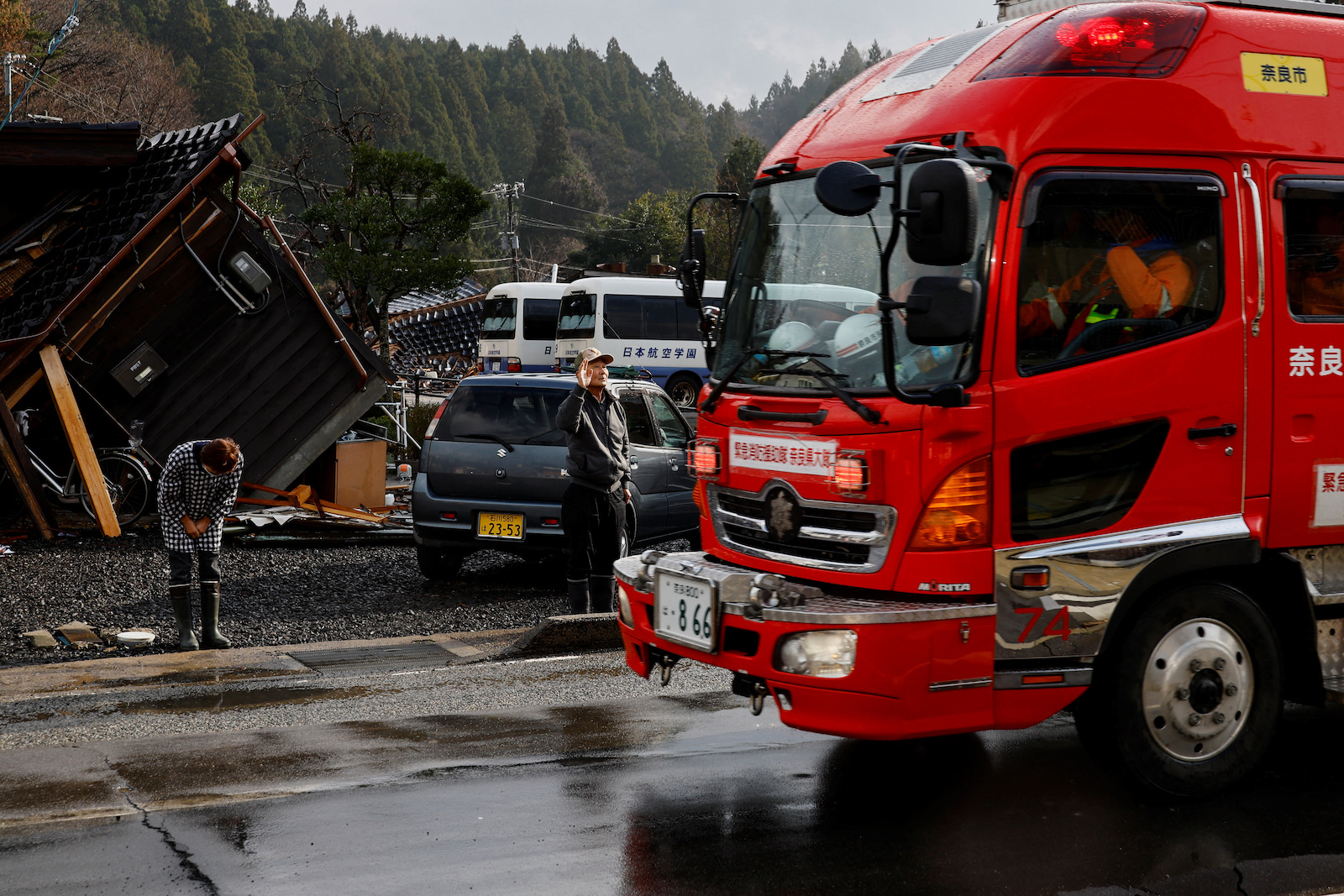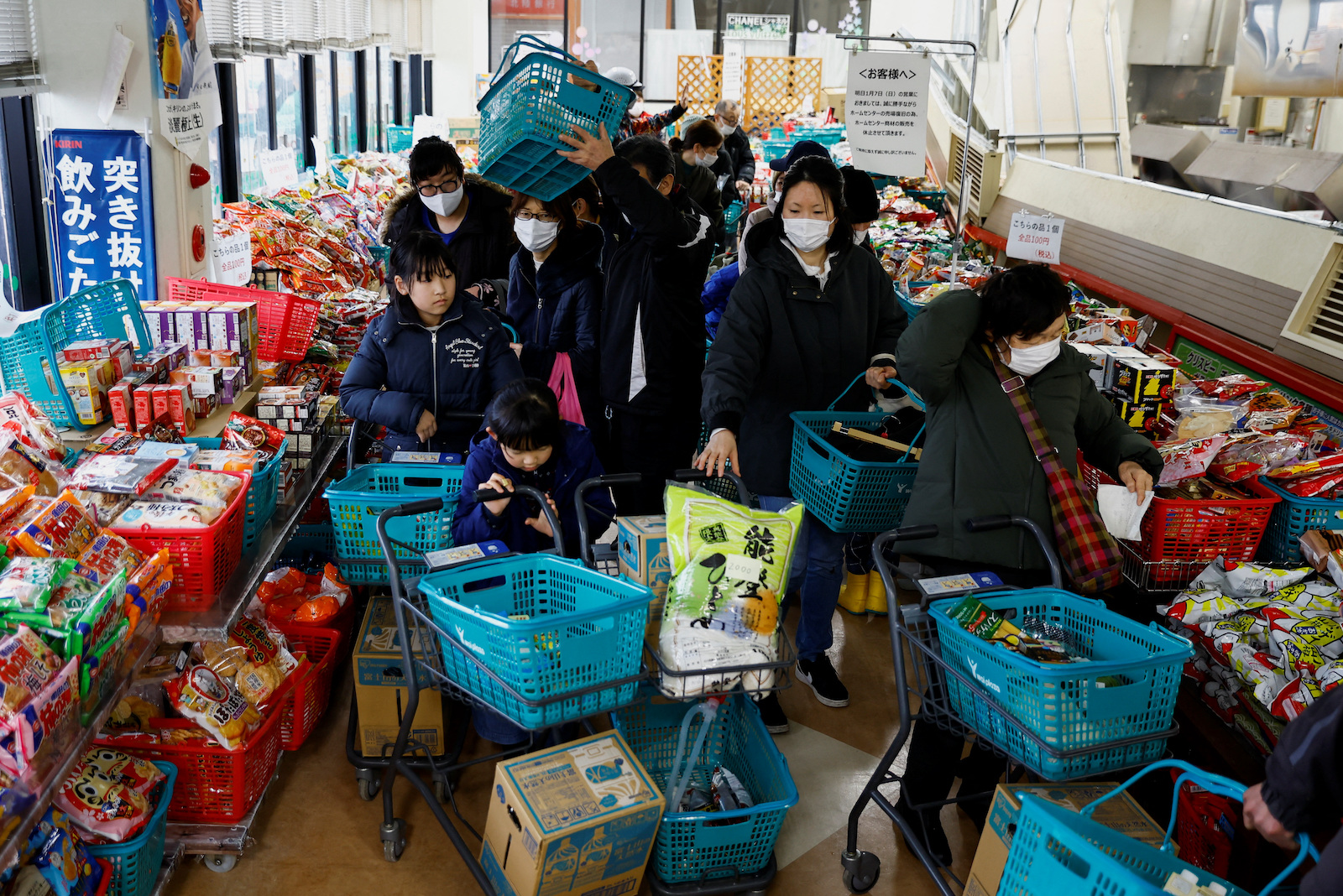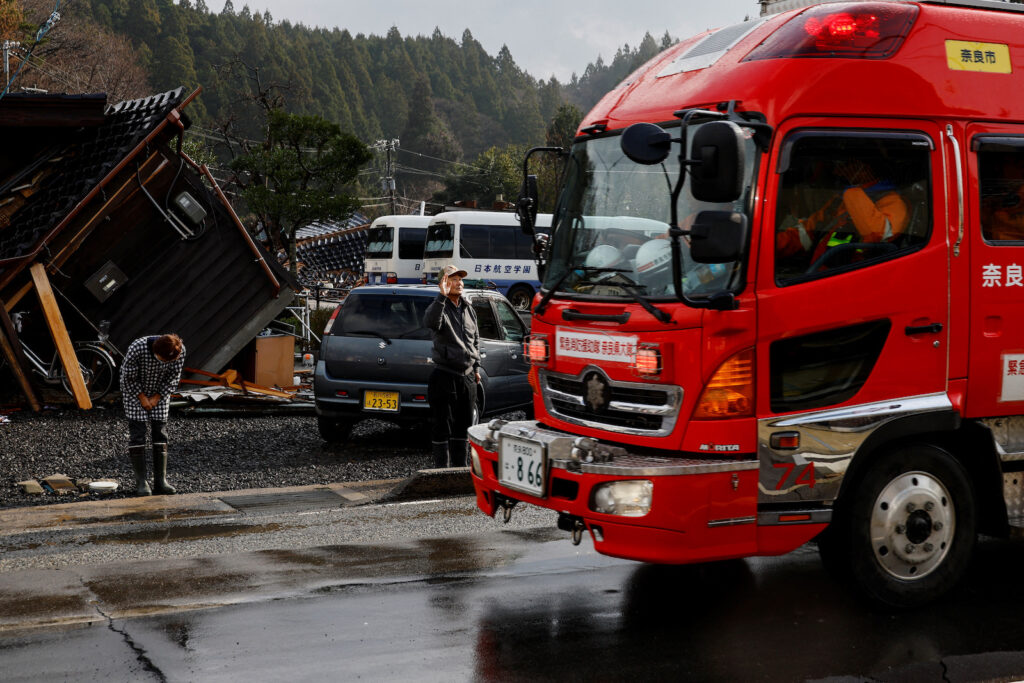[ad_1]
Aftershocks threatened to bury more homes and block roads crucial for relief shipments, as the death toll from the earthquakes that rattled Japan’s western coastline last week reached 100 on Saturday, with 211 still missing.
Among the dead was a 5-year-old boy who had been recovering from injuries after boiling water spilled on him during Monday’s 7.6 magnitude earthquake. His condition suddenly worsened and he died Friday, according to Ishikawa prefecture, the hardest-hit region.
Officials warned that roads, already cracked from the dozens of earthquakes that continue to shake the area, could collapse completely. That risk was growing with rain and snow expected overnight and Sunday.
Reported deaths had reached 98 earlier Saturday, and two more deaths were reported in Anamizu city as officials were holding their daily meeting to discuss strategy and damages.
Wajima city has recorded the highest number of deaths with 59, followed by Suzu with 23. More than 500 people were injured, at least 27 of them seriously.
The temblors left roofs sitting haplessly on roads and everything beneath them crushed flat. Roads were warped like rubber. A fire turned a neighborhood in Wajima to ashes.

Yutaka Obayashi and his wife Akiko, who have been living in their car since the earthquake, greet firefighters in Wajima, Ishikawa Prefecture, on Saturday. Photo: REUTERS/Kim Kyung-Hoon

Residents stand in a line to buy goods at a reopened supermarket which was damaged by the earthquake, in Wajima, Ishikawa Prefecture, on Saturday. Photo: REUTERS/Kim Kyung-Hoon
Officials said 211 were still unaccounted for, although the number has fluctuated after shooting up two days ago. Eleven people were reported trapped under two homes that collapsed in Anamizu.
For Shiro Kokuda, 76, the house in Wajima where he grew up was spared but a nearby temple went up in flames and he was still looking for his friends at evacuation centers.
“It’s been really tough,” he said.
Japan is one of the fastest-aging societies in the world. The population in Ishikawa and nearby areas has dwindled over the years. A fragile economy centered on crafts and tourism was now more imperiled than ever.
Along Japan’s coastline, power was gradually being restored, but water supplies were still short. Emergency water systems were also damaged.
Thousands of troops were flying and trucking in water, food and medicine to the more than 32,000 people who had evacuated to auditoriums, schools and other facilities.
The nationally circulated Yomiuri newspaper reported that its aerial study had located more than 100 landslides in the area, and some were blocking lifeline roads.
The urgency of the rescue operations intensified as the days wore on. But some have clung to life, trapped under pillars and walls, and were freed.
© Copyright 2024 The Associated Press. All rights reserved. This material may not be published, broadcast, rewritten or redistributed without permission.
[ad_2]
Source link

